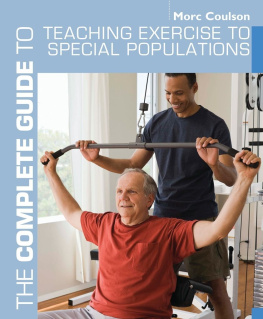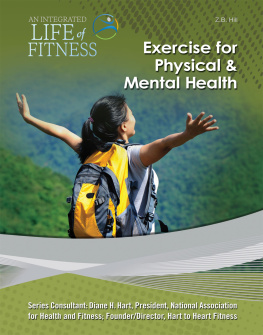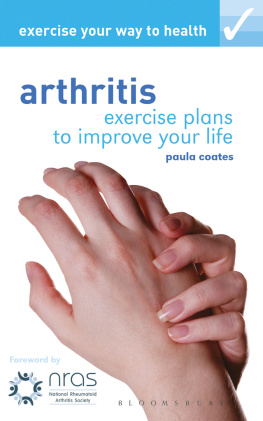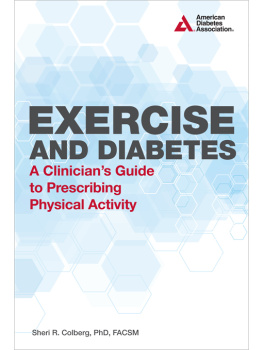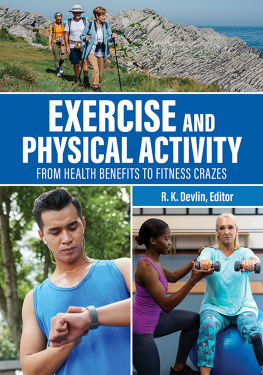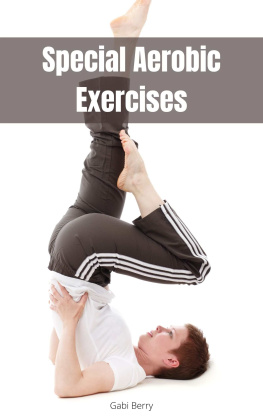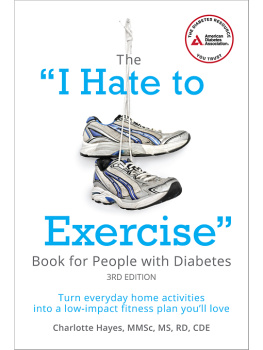Physical activity, in particular sport, has been an important part of my life since I was very young. I have been fortunate in that I have always had a talent for boxing, and I have also had people around me from an early age who have helped to nurture this talent and continue to do so. Being physically fit is an important part of boxing and means that I can continue to make a career out of what I love doing. I also feel that I benefit in terms of psychological and emotional well-being as a result. I would therefore encourage anyone wanting to get involved in supervising physical activity to try to improve their knowledge so that they can help individuals from all walks of life to feel the benefit as I do. The Complete Guide to Teaching Exercise to Special Populations is an excellent book that can help either those with experience or those who are just starting out with practical and theoretical information relating to a host of conditions.
Tony Jeffries, Professional Boxer
Bronze medal 2008 Olympics. Professional fights: seven wins and one draw. Amateur fights: 95. England vests: 56. BBC North East Sports Personality of the Year 2008. Silver medal EU Amateur Championship 2008; Bronze medal EU Amateur Championship 2005; Bronze medal EU Amateur Championship 2004.
The main purpose of this book is to provide a practical resource for those people involved or wanting to be involved in the delivery of physical activity to those with specific health conditions, referred to as special populations. This book is also useful for those individuals who have been identified as being in a special population category and who are interested in taking up some form of physical activity. This book is also designed to be used as a study guide to complement any training qualification, as the information provided here is based on up-to-date research and information provided by relevant professional bodies. There are some terms that are used throughout the book that might not be familiar to all readers. For example, the term physical activity is used extensively to describe any form of movement, exercise or activity that increases energy expenditure. This can range from gym-type exercise to activities such as gardening and washing the car. Another term that might not be familiar is related to a unit of measurement used in some of the diagnostic tests within. This unit is a mmol, which means, in simple terms, a very small amount. For example, when measuring blood cholesterol, the units used are mmol per litre of blood (mmol/l).
SPECIAL POPULATIONS
There is no universally accepted definition of the term special population, but it is often meant as a collective term for a group of people with certain health-related conditions. The term possibly originates from the health and fitness industry and relates to training and qualifications required by fitness instructors for the purpose of delivering physical activity programmes to those that need certain consideration outside of the apparently healthy population in other words, those people with health-related conditions that are not covered in general fitness qualifications but are covered on specific training courses designed for these conditions. The National Quality Assurance Framework, which was set up by the Department of Health in 2001, states that the minimum level of qualification recommended for exercise professionals who are responsible for designing and delivering physical activity programmes for low-to-medium risk referred patients, is a level 3 advanced instructor award with a recognised exercise referral qualification. Exercise referral is the general term that relates to a scheme that is normally run by a GPs (doctors) surgery or medical centre whereby people with certain diagnosed conditions are assessed and given an individual physical activity programme, which is delivered by those who are qualified to do so (typically as part of an NHS-funded team). Those individuals on exercise referral schemes can, however, be referred in different ways. First, a visit to the GP might result in the diagnosis of a condition that requires admission to the scheme.

Notes:
L2 = level 2 instructor award
L3 = level 3 advanced instructor award
L4 = level 4 specialist instructor award BACR = British Association of Cardiac Rehabilitation (see )
On the other hand, individuals might be referred to the GP by some other mechanism. For example, those wishing to supervise a physical activity programme for an individual should always carry out some kind of screening to identify if the individual doing the activity is apparently healthy or not. One of the most common forms used to do this is the Physical Activity Readiness presents an overview of the conditions for which medical approval is considered by the author to be an essential prerequisite, and those for which it is just a recommendation. The table also gives an overview of those conditions for which specific qualifications are considered by the author to be essential for those supervising activity, or whether these are just recommended. There are many training courses that deliver qualifications relevant to the conditions covered in this book, however the availability of courses for some of the conditions can be limited, and for others do not yet exist.
Information relating to available training courses, and the structure of qualifications and standards (known as National Occupational Standards) for the health and fitness industry is available from Skills Active (www.skillsactive.com), which is the sector skills council for active leisure in the UK. There is also a body known as the Register of Exercise Professionals (www.exerciseregister.org.uk), which provides information related to the levels of awards and how to register as part of the professional body.
ABOUT THIS BOOK
The book is organised into four distinct parts. First, (chapters 213) covers those special populations for which there is only a potential risk of developing the particular condition and, in some cases, where physical activity substantially reduces that risk. The special populations covered in these chapters are obesity, diabetes mellitus, chronic obstructive pulmonary disease (COPD), asthma, hypertension, hyperlipidaemia, arthritis, osteoporosis, Parkinsons disease, multiple sclerosis, cardiovascular disease (CVD) and stroke. Each chapter follows a typical layout, with sections as follows.
WHAT IS IT?
Each chapter starts with a description of the relevant condition. Some of the descriptions are more in depth than others, but this is not representative of how important each condition is thought to be, as all conditions within this book are considered to be of equal importance.
PREVALENCE
This simply refers to how many people are thought or estimated to have the condition. The author can rely only on research available at the time of this books publication, and indeed the quality of that research. The very nature of some of the conditions makes it difficult for accurate figures to be acquired. Also, depending on the source of the research, some conditions will have global estimates, while others will have estimates only from the UK.
SYMPTOMS
Chapters 213 deal with a range of symptoms that are related to the specific condition. It should be understood, however, that symptoms do not always appear and in some cases there may be multiple symptoms, whereas in others there might be only one or two.

